
高分子物理基础(FundamentalofPolymerPhysics)9787518447640
正版图书,可开发票,请放心购买。
¥ 80.27 8.2折 ¥ 98 全新
仅1件
广东广州
认证卖家担保交易快速发货售后保障
作者卞军,蔺海兰
出版社轻工
ISBN9787518447640
出版时间2024-06
装帧其他
开本其他
定价98元
货号32104767
上书时间2024-11-07
- 店主推荐
- 最新上架
商品详情
- 品相描述:全新
- 商品描述
-
作者简介
卞军,西华大学材料科学与工程学院教授,研究方向为高分子材料,参与国家级项目和主持省部级及其以上项目7项,主持市厅级项目、校级科研项目10余项以及多项企业委托项目。是材料科学与工程四川省特色专业建设项目和卓越工程师项目建设的主研人员(排名第2),是“材料专业综合改革项目”校级教学团队建设项目负责人。
蔺海兰,2006年毕业于海南大学高分子材料专业,工学硕士。2011年4月调到西华大学材料科学与工程学院工作,工程师、助理研究员。
目录
Contents
Contents高分子物理基础Chapter 1Introduction1
11The importance of polymer science and engineering1
12The task of polymer physics1
121The main task of polymer physics1
122Main contents and the requirements of the course2
13The definition and the chemical nature of polymers2
131Introduction2
132The classification of polymers4
133Classical polymerization processes7
134Newer polymers and polymerization processes11
14A brief history of the development of polymer science and synthetic polymers12
141Development of polymer science12
142Development of synthetic polymers16
15Properties and applications of polymers20
16Polymer processing22
161Introduction22
162Additives and composites22
163Polymer processing23
Questions25
Reference25
Chapter 2Molecular sizes―the molecular mass and distribution27
21Introduction27
22Statistical significance of polymer molecular mass28
23Characterization methods of polymer molecular mass28
24Characterization method of the molecular mass distribution30
25Determination of molar masses and distributions33
251Endgroup Analysis35
252Osmotic Pressure 36
253Light Scattering 38
254Flight Time 46
255Viscometry 51
26Determination Methods of Molecular Mass Distribution54
261Phase Separation and Fractionation 54
262Gel Permeation Chromatography 55
Questions59
Reference61
Chapter 3The chain structure of polymers65
31Introduction65
32Construction66
33Configuration68
331Bonding methods of monomer68
332Branching70
333Crosslinking 71
334Sequential structure of copolymer 72
335Configuration isomerism of polymer chains 74
34Conformation77
341Size and shape of polymer chain78
342The shapes of polymer molecules79
343The internal rotational conformation and flexibility of a polymer chain83
344The single freely jointed chain90
345More realistic chainsthe excluded volume effect92
346Characteristics of polymer chain flexibility94
347Wormlike chains95
Questions96
Reference97
Chapter 4The condensed structure of polymers98
41Introduction98
42Forces between polymer molecules99
421Van der Waals force and hydrogen bond99
422Cohesive energy and cohesive energy density101
43The structure model of amorphous polymer102
431Three structural models of amorphous state102
432The macroconformations of polymers103
433Lamellar stacks104
44Crystalline state of polymers105
441Crystal morphology of crystalline polymers 105
442Crystallization process of polymer117
443Structural model of crystalline polymers126
45Crystallinity129
451Definition of crystallinity129
452Experimental determination of crystallinity130
453Factors influencing crystallinity133
454The effect of crystallinity on polymer properties138
46Melting and melting point of crystalline polymers142
461Melting thermodynamic analysis of crystalline polymers142
462Melting characteristics of crystalline polymers142
463Influencing factors of polymer melting point144
47Orientation state of polymer153
471Orientation phenomenon of polymer153
472Orientation mechanism155
473Degree of orientation and its testing methods156
474Applications of orientation156
48Liquid crystal state of polymer159
481The structure of polymer liquid crystal159
482Characteristics of polymer liquid crystals161
483Application of polymer liquid crystal163
Questions164
Reference165
Chapter 5Polymer solution167
51Introduction167
52Polymer dissolution process and solvent selection168
521Characteristics of polymer dissolution processes170
522Thermodynamic explanation of polymer dissolution process172
523Selection of polymer solvent176
53FloryHuggins polymer solution theory178
531Mixing entropy(ΔSm)179
532Heat of mixing181
533Chemical potential of polymer solution183
54Ideal solution of polymer184
55Nonideal behavior theory of polymer solutions186
551FloryKrigbaum dilute solution theory186
552FloryRehner solution theory189
553Van′t Hoff dilution theories190
56Phase equilibrium and phase separation of polymer solutions191
57Scaling concept and scaling law of polymers194
58Semidilute polymer solutions195
581The dilute to semidilute transition196
582The size of a polymer chain in a semidilute solution197
583A series drop model of semidilute solution197
584Osmotic pressure of a semidilute solution198
59The influence of temperature and concentration on the size of polymeric
chains in a solution200
510Polymer gels200
511Polyelectrolyte solution201
512Diffusion of polymers in solution203
513Viscous motion of flexible polymers in dilute solution205
Questions210
Reference211
Chapter 6Polymer blends212
61Introduction212
611Polymer blends and its category212
612Types of polymer blends and expression of blends composition212
613Advantages of polymer blending 213
62Preparation methods of polymer blends215
63Thermodynamic basis of polymer blends216
64Compatibility and compatibilization of polymer blends218
641Fundamental concept of polymer compatibility218
642Compatibility prediction219
643Research methods of compatibility220
644Methods to enhance compatibility224
65Morphology of polymer blends225
651Types of morphology in polymer blends225
652Factors influencing the phase morphology of polymer blends231
66Phase interfaces of blends234
661Factors related to polymer surface tension234
662Interfacial tension of polymerpolymer twophase system236
663Interface layer and interface action237
67Performance of polymer blend systems240
671Factors affecting blend performance241
672General relationship between the properties of polymer blends and their components242
673Mechanical properties of polymer blends248
674Rheological properties of polymer blends248
675Glass transition of polymer blend systems251
Questions255
Reference256
Chapter 7Motion of polymer molecules257
71Introduction257
72Characteristics of thermal motion of polymer molecules257
73Polymer molecular motion and mechanical state260
731Mechanical state transition of amorphous polymers260
732Secondary relaxation transition263
74The glass transition of polymers263
741Evidence of the glass transition in polymers263
742The theory of glass transition in polymers265
743Measurement of Tg269
744Factors affecting the Tg273
75Viscous flow284
751The movement of chains during polymer viscosity flow284
752The snakelike motion of polymer chains and the pipe model in viscoelastic flow285
753Factors of influence on viscosity flow temperature287
754Factors affecting the viscosity of polymer melt292
Questions297
Reference299
Chapter 8Mechanical properties of polymersPart I:Tensile,Yield,
Break and Strength300
81Introduction300
82Basic physical quantities and mechanical performance parameters301
83Tensile behavior of polymers309
831Stressstrain curves of glassy state polymers313
832The stressstrain curve of crystalline and semicrystalline polymers316
833Tensile behavior of hardelastic polymers 317
834Plasticrubber transition by strain319
84Yield of polymers321
85Fracture theory and theoretical strength of polymers322
851Fracture theory322
852Theoretical strength of polymers327
86Factors that influence the actual strength of polymers329
861Effects of structural factors of polymers329
862Effects of crystallization and orientation330
863Effects of stress concentration331
864Effects of plasticizers333
865Effects of fillers333
866Effects of copolymerization and blending337
867The influence of external force acting speed and temperature338
Questions339
Reference341
Chapter 9Mechanical properties of polymersPart Ⅱ:High elasticity and
viscoelasticity342
91Introduction342
92Physical properties of hyperelastic polymers343
921The phenomenology of rubber elasticity343
922Characteristics of hyperelasticity349
923The thermodynamic analysis of rubber elasticity354
924The statistical theory of rubber elasticity355
93Swelling of crosslinked networks and the ultimate properties of rubber365
94Mechanical relaxation of polymersviscoelasticity366
941Mechanical relaxation phenomenon of polymers366
942Mechanical models of viscoelasticity369
95The relationship between viscoelasticity and time,temperaturetime
equivalence principle374
96Boltzmann superposition principle376
97Experimental methods for studying viscoelastic behaviour378
971Transient measurements378
972Dynamic measurementsthe complex modulus and compliance379
973Dynamic measurements;examples380
98Relaxation transformation and molecular mechanism of polymers387
Questions394
Reference397
Chapter 10Other properties of polymers398
101Introduction398
102Electrical properties of polymers398
1021Dielectric properties of polymers398
1022Polymer conductivity409
1023Electrostatic phenomena in polymers410
1024Other electrical properties of polymers411
103Optical properties of polymers412
104Permeability of polymers413
1041Definition413
1042Gas permeation theory413
1043Major factors affecting gas permeability414
105Surface and interface properties of polymers415
1051The bonding properties of the interface416
1052Performance of Polymer Adhesives417
105
相关推荐
— 没有更多了 —


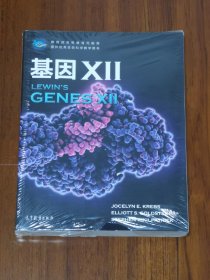
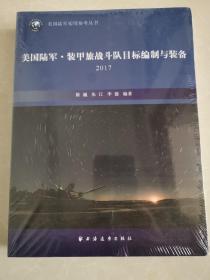
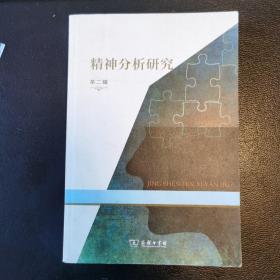

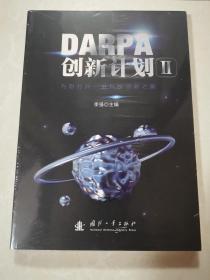


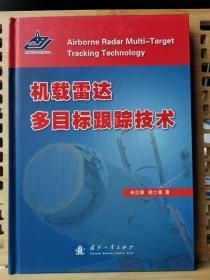
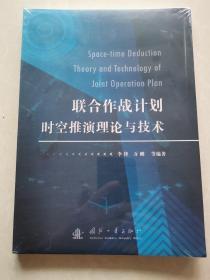




















以下为对购买帮助不大的评价